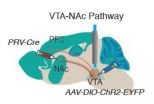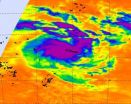(Press-News.org) Some people like to have a few close friends, while others prefer a wider social circle that is perhaps less deep. These preferences reflect people's personalities and individual circumstances — but is one approach to social networks "better" than the other? New research suggests that the optimal social networking strategy depends on socioeconomic conditions.
Researchers Shigehiro Oishi of the University of Virginia and Selin Kesebir of the London Business School explore the benefits of social networking strategies in two studies published in Psychological Science, a journal of the Association for Psychological Science.
"In the age of Facebook, many Americans seem to opt for a broad, shallow networking strategy. Yet, cross-cultural research has shown that having many friends is not always viewed positively outside the United States," Oishi and Kesebir write.
One reason that Americans may prefer a large social network, the researchers surmise, is because Americans move around a lot. Thus, it may make sense to spread time and resources across many friends to minimize the loss of any one friend moving away.
Another important factor may be the economic conditions at a given time. When times are prosperous, your friends are less likely to need much help, whether it's covering a hospital bill or providing babysitting, and so a broad network of friends is easy to maintain. But when times aren't as flush, having more friends might incur huge costs in terms of both time and resources.
With this in mind, Oishi and Kesebir predicted that a broad, shallow networking strategy would be optimal for people living in a residentially mobile, economically favorable context. A narrow, deep networking strategy, on the other hand, would be optimal if people tend to stay in one place and economic conditions aren't as favorable.
In the first study, they created a model that simulated the benefits individuals receive from their social network under various socioeconomic conditions. The researchers were able to simulate people who have different numbers of friends at different levels of friendship and they were also able to account for the investment required by each type of friendship.
As they predicted, they found that having a small social network with deep ties to friends is advantageous when friends are not likely to move away and the economy is unstable. Regardless of economic conditions, having a broad social network with weak ties to friends is advantageous when friends are likely to move away.
Oishi and Kesebir conducted a second study to investigate whether this pattern of results would hold up in the real world.
They recruited 247 Americans to participate in an online survey through Amazon's Mechanical Turk. The survey was designed to parallel the computer simulation from the first study. The participants were asked to list three different kinds of friends: very close, close, and distant. In order to get a sense of the participants' social networking strategy, the researchers asked them to imagine that their time, energy, and money were limited to 60 points and to distribute the points among their three types of friends.
They also assessed participants' subjective well-being through a combination of three measures: life satisfaction, experiences of positive emotions, and lack of experiences of negative emotions.
Finally, the researchers used census data to obtain information about residential mobility and median family income in each zip code.
The findings from the second study echoed those of the first study. In zip codes that were residentially stable and relatively low income, participants who had a narrow, deep friendship strategy reported greater well-being than those who had a broad, shallow friendship strategy. Notably, the broad, shallow strategy was associated with subjective well-being in all three of the other economic conditions (low income-unstable, high income-stable, high income-unstable).
Oishi and Kesebir argue that these two studies provide clear evidence for the role of socioeconomic factors — such as residential mobility and economic security — in determining the most adaptive networking strategy.
"As residential mobility decreases and economic recession deepens in the United States, the optimal social-networking strategy might shift from the broad but shallow to the narrow but deep, even in a nation known best for the strength of weak ties," the researchers conclude.
###
For more information about this study, please contact: Shigehiro Oishi at soishi@virginia.edu.
The APS journal Psychological Science is the highest ranked empirical journal in psychology. For a copy of the article "Optimal Social-Networking Strategy Is a Function of Socioeconomic Conditions" and access to other Psychological Science research findings, please contact Anna Mikulak at 202-293-9300 or amikulak@psychologicalscience.org.
END
PASADENA, Calif.—A team of astronomers led by the California Institute of Technology (Caltech) has used NASA's Hubble Space Telescope to discover seven of the most primitive and distant galaxies ever seen.
One of the galaxies, the astronomers say, might be the all-time record holder—the galaxy as observed existed when the universe was merely 380 million years old. All of the newly discovered galaxies formed more than 13 billion years ago, when the universe was just about 4 percent of its present age, a period astronomers call the "cosmic dawn," when the first galaxies ...
WASHINGTON -- Using NASA's Hubble Space Telescope, astronomers have uncovered a previously unseen population of seven primitive galaxies that formed more than 13 billion years ago, when the universe was less than 4 percent of its present age. The deepest images to date from Hubble yield the first statistically robust sample of galaxies that tells how abundant they were close to the era when galaxies first formed.
The results are from an ambitious Hubble survey of an intensively studied patch of sky known as the Ultra Deep Field (UDF). In the 2012 campaign, called UDF12, ...
As one of the top 10 barley producers in the world, Canada faces a problem of adapting to the 'new normal' of a warmer, drier climate.
The 2012 growing season was considered an average year on the Canadian Prairies, "but we still had a summer water deficit, and it is that type of condition we are trying to work with," said Scott Chang, a professor of soil science in the University of Alberta's Department of Renewable Resources in Edmonton, Canada.
Chang teamed with fellow crop scientist Anthony Anyia of Alberta Innovates – Technology Futures in 2006, following a severe ...
A new study by biologists at Mercyhurst University focuses on the influence of climate change, particularly warmer winters, on the survival and potential fecundity of cold-blooded animals.
Cold blooded animals, or ectotherms, do not have an internal mechanism for regulating body temperature. Instead, they rely on solar energy captured by the environment.
The purpose of the Mercyhurst study, a collaboration of Michael Elnitsky, Ph.D., assistant professor of biology; and students Drew Spacht and Seth Pezar, is to assess the current and future impacts of climate change ...
A specific pattern of neuronal firing in a brain reward circuit instantly rendered mice vulnerable to depression-like behavior induced by acute severe stress, a study supported by the National Institutes of Health has found. When researchers used a high-tech method to mimic the pattern, previously resilient mice instantly succumbed to a depression-like syndrome of social withdrawal and reduced pleasure-seeking – they avoided other animals and lost their sweet tooth. When the firing pattern was inhibited in vulnerable mice, they instantly became resilient.
"For the first ...
Back in January, a new X-ray source flared and rapidly brightened in the Andromeda galaxy (M31), located 2.5 million light-years away. Classified as an ultraluminous X-ray source (ULX), the object is only the second ever seen in M31 and became the target of an intense observing campaign by orbiting X-ray telescopes -- including NASA's Swift -- and radio observatories on the ground. These efforts resulted in the first detection of radio-emitting jets from a stellar-mass black hole outside our own galaxy.
A ULX is thought to be a binary system containing a black hole that ...
Researchers at Michigan State University have discovered a protein that does its best work with one foot in the grave.
The study, which appears in the current issue of the Journal of Biological Chemistry, focuses on the nontraditional lifestyle of Retinoblastoma tumor suppressor proteins, which could lead to new ways to treat cancer.
"Retinoblastoma proteins are unique in that they use controlled destruction to do their jobs in a timely but restrained fashion," said Liang Zhang, a lead author and MSU cell and molecular biology graduate student. "This is an unusual way ...
A drug that works through the same brain mechanism as the fast-acting antidepressant ketamine briefly improved treatment-resistant patients' depression symptoms in minutes, with minimal untoward side effects, in a clinical trial conducted by the National Institutes of Health. The experimental agent, called AZD6765, acts through the brain's glutamate chemical messenger system.
Existing antidepressants available through prescription, which work through the brain's serotonin system, take a few weeks to work, imperiling severely depressed patients, who can be at high risk ...
COLUMBUS, Ohio – A new study of the batteries commonly used in hybrid and electric-only cars has revealed an unexpected factor that could limit the performance of batteries currently on the road.
Researchers led by Ohio State University engineers examined used car batteries and discovered that over time lithium accumulates beyond the battery electrodes – in the "current collector," a sheet of copper which facilitates electron transfer between the electrodes and the car's electrical system.
This knowledge could aid in improving design and performance of batteries, explained ...
The date 12-12-12 may be numerically significant, but for the residents of American Samoa and Fiji in the South Pacific Ocean, it means a newborn tropical storm named Evan is causing problems. NASA's Aqua satellite and NOAA's GOES-15 satellite both captured imagery of the newborn storm's cloud cover.
Tropical Storm Evan caused regional warnings to be posted on Dec. 12. In American Samoa, a gale warning and storm watch are in effect for Tutuila, Aunuu, Manua and Swains Island.
The Atmospheric Infrared Sounder (AIRS) instrument aboard NASA's Aqua satellite captured an ...





